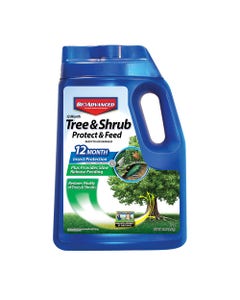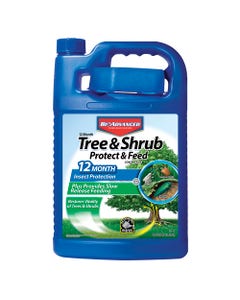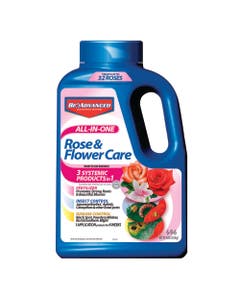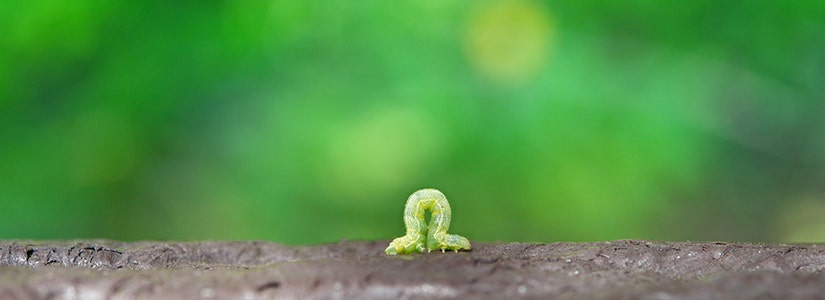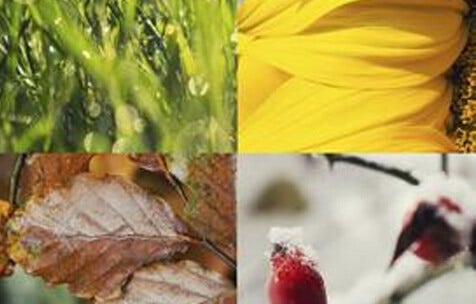

- Home
- Solution Center
- Learn
- Rose & Flower
- Control Japanese Beetles
Control Japanese Beetles
What Is This Insect?
The Japanese Beetle is one of the most serious garden pests east of the Rockies. These shiny, coppery-green ½-inch long beetles entered the United States in 1916, purportedly hidden in a shipment of irises from Japan. Prior to the insect’s export, it was known to occur only in Japan, where it’s not a major pest problem.
Adult Japanese beetles have a short life span: 30-45 days on average. Females feed, mate and lay eggs – repeating the process every 24-48 hours. At each egg laying, female beetles deposit 1-5 eggs 2-4 inches deep in soil. The white, wormlike larvae, or Grubs, that hatch from the eggs are the nation’s number one turf pest. Grubs devour grass roots, making it impossible for grass to absorb water and ultimately killing grass. Their feeding produces irregular brown spots in a lawn. High numbers attract predators like skunks, moles and armadillos, which dig up turf to unearth Grubs. They also feed on organic matter in the soil and other plant roots.
Several Beetles are often confused with Japanese Beetles and can also be very destructive. The list of doppelgangers varies by region, but includes Bumble Flower Beetle, Masked Chafer Beetle, June Beetle, Green Fruit Beetle, Hoplia Beetle And Sandhill Chafer (sometimes called false Japanese Beetle). While all of these adult Beetles have distinguishing characteristics, the Grubs are nearly identical, requiring entomological expertise to tell them apart.
They Eat Almost Anything
Adult Japanese Beetles feast on more than 400 plant species, feeding in large groups between leaf veins and classically skeletonizing the foliage. They also feed on flowers and fruit. Favorite plants include: roses, crabapples, pin oak, hibiscus, grapes, raspberries, linden, crape myrtle, sassafras, Japanese maple and Norway maple. Plants seldom damaged by Japanese beetle feeding include boxwood, red maple, flowering dogwoods, hollies, magnolias and lilacs.
Every summer, Japanese Beetles devastate lawns and gardens. Although they will seldom kill a tree or shrub, they can slowly weaken them, making them subject to secondary pests and diseases. It is estimated that damage and cost of controlling Japanese Beetles in the United States is over 460 million dollars each year.
Signs Of Infestation
Look for skeletonized foliage and irregular holes in plant leaves and flowers. Japanese Beetles release a pheromone that allows males and females to find each other. They meet on a plant, feed and mate. The point is, if you have a few Japanese Beetles feeding on your plant, that number can quickly grow as more pheromone is released.
Where Are Japanese Beetles Found?
Japanese Beetles are distributed throughout the United States. Established populations occur most heavily east of the Rockies and in the Midwest. Small pockets of beetles have been identified on the West Coast. Adult Beetles conquer geographical barriers by hitching rides on freight, vehicles or even air cargo. Eggs and Grubs travel in soil of nursery stock.
How To Stop These Bugs From Devouring Your Plants
There are a variety of insecticides labeled for controlling Japanese Beetles. Imidacloprid, a systemic insecticide applied to the soil at least 4 weeks prior to adults taking flight, provides the best long-term control. BioAdvanced™ 12 Month Tree & Shrub Protect & FeedII*, which features imidacloprid, offers insect protection that lasts up to 1 year. Choose from either Concentrates or Granules, with both there’s no spraying! Simply apply it around the base of your tree for systemic protection from the roots to the tip of every leaf. Or try BioAdvanced All-In-One Rose & Flower Care* and get insect control, disease control and fertilizer all in one application.
Imidacloprid also comes in formulations for use on controlling Grubs in lawns, although that may not have a significant impact on adult Japanese Beetle control (they will still fly in from surrounding areas).
Japanese Beetle traps are generally not recommended because the pheromone tends to bring more Japanese Beetles into the area than are captured. If you use them, place them on the perimeter of your yard, away from susceptible plants.
There are also some natural and biological controls. Contact your local cooperative extension office for more information on control options and proper timing of applications.
Other Resources
Managing Japanese Beetles: A Homeowners Guide, published by the USDA covers control measures and includes lists of plants that resist Japanese beetle feeding. Get a free copy at: https://www.aphis.usda.gov/plant_health/plant_pest_info/jb/downloads/JBhandbook.pdf
*Not for sale in NY. Reclassified as restricted use in CT & MD.

